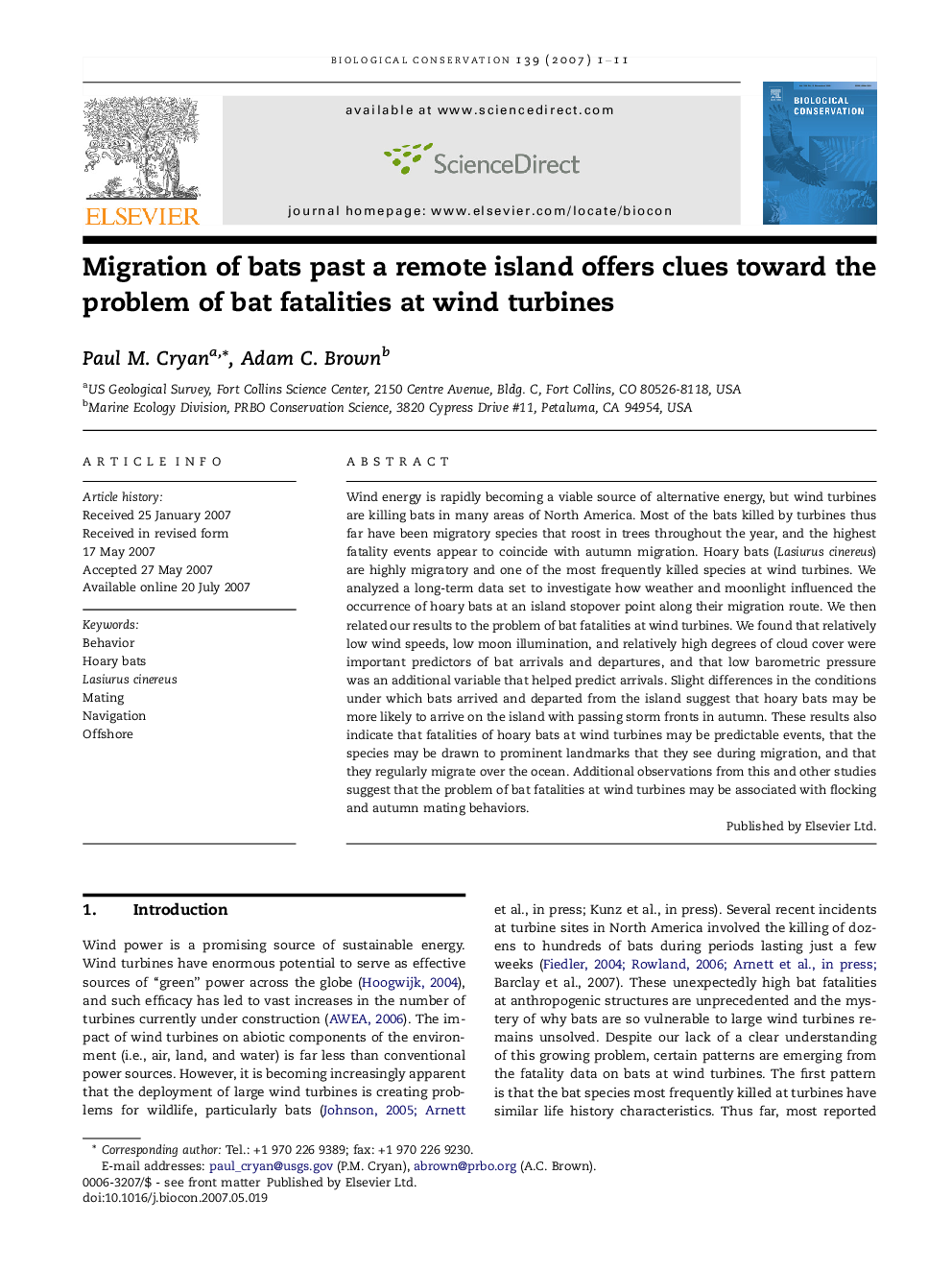| کد مقاله | کد نشریه | سال انتشار | مقاله انگلیسی | نسخه تمام متن |
|---|---|---|---|---|
| 4386994 | 1617954 | 2007 | 11 صفحه PDF | دانلود رایگان |

Wind energy is rapidly becoming a viable source of alternative energy, but wind turbines are killing bats in many areas of North America. Most of the bats killed by turbines thus far have been migratory species that roost in trees throughout the year, and the highest fatality events appear to coincide with autumn migration. Hoary bats (Lasiurus cinereus) are highly migratory and one of the most frequently killed species at wind turbines. We analyzed a long-term data set to investigate how weather and moonlight influenced the occurrence of hoary bats at an island stopover point along their migration route. We then related our results to the problem of bat fatalities at wind turbines. We found that relatively low wind speeds, low moon illumination, and relatively high degrees of cloud cover were important predictors of bat arrivals and departures, and that low barometric pressure was an additional variable that helped predict arrivals. Slight differences in the conditions under which bats arrived and departed from the island suggest that hoary bats may be more likely to arrive on the island with passing storm fronts in autumn. These results also indicate that fatalities of hoary bats at wind turbines may be predictable events, that the species may be drawn to prominent landmarks that they see during migration, and that they regularly migrate over the ocean. Additional observations from this and other studies suggest that the problem of bat fatalities at wind turbines may be associated with flocking and autumn mating behaviors.
Journal: Biological Conservation - Volume 139, Issues 1–2, September 2007, Pages 1–11